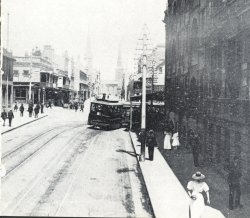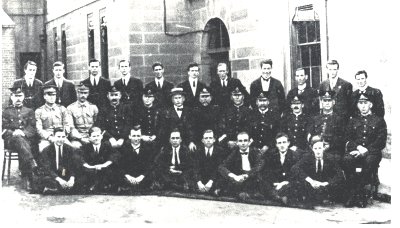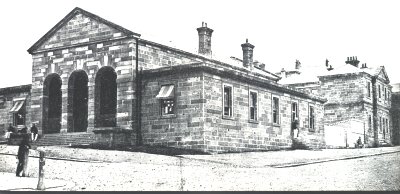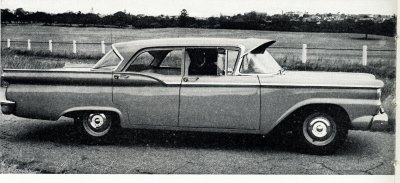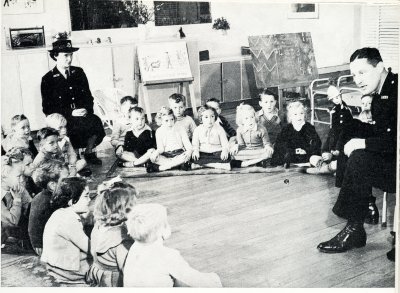Motor Traffic Branch – 1800’s
It may come as a surprise to many that Sydney from its earliest settlement days and long before the advent of the self-propelled motor vehicle, had serious traffic problems upon its narrow and winding streets.
INITIAL PLANNING
The first plan of Sydney was prepared under the direction of Governor Phillip only a few weeks after the arrival of the First Fleet. The first plan was on a grand scale providing for streets more than 200 feet wide, running north-east and south-east to benefit from the prevailing breezes. These streets were to run from what is now Circular Quay, south-west to York Street to reach the top of the ridge separating the Tank Stream from Darling Harbour. The plan also envisaged large allotments to provide for future expansion for the public buildings which plans, unfortunately, were never adopted.
These early proposals, ambitious as they were, did not envisage the vast metropolis that was soon to rise up on the picturesque foreshores of beautiful Port Jackson. Nor could the early planners foresee that Sydney would soon be one of the most important industrial and commercial centres of the British Empire and one of the leading cities of the world.
EARLY PROGRESS
With the arrival of Governor Macquarie in 1810, some effort was made to control Sydney’s horse drawn traffic, and in 1813 it was decreed that all proprietors of carts, drays, and wagons register such vehicles with the police officials or the district magistrate. In this era, all the principal roads around Sydney were toll roads, and it is of interest to note that the fees payable for the use of the Sydney-Parramatta road, which was opened officially on the 10th April, 1811, ranged from 2d. (two pennies) per head for horned cattle to three shillings for a four-wheeled carriage. In 1842 the passing of the Sydney Corporation Act gave the Council authority to introduce special regulations and by-laws for parking.
APPOINTMENT OF TRANSIT COMMISSIONER
In the later decades little progress was made in solving Sydney’s traffic problems until 1888, when a Transit Commissioner was appointed by the Government to control and supervise the traffic of Sydney. In that year there were approximately 400 horse drawn omnibuses running in and out of Sydney providing a passenger service to the outlying suburbs, in addition to 1,000 horse drawn cabs and 500 delivery vans. This great mass of slow moving traffic created grave congestion, a situation further aggravated by the expansion of the steam tram services originally introduced in 1886.
THE COMMISSION ABOLISHED
The Metropolitan Transit Commissioner had absolute rule over traffic control and supervision and acted independently of the Metropolitan Police Force until 1900, when it was found that owing to vast changes in traffic conditions caused by the introduction of fast moving electric trams, more strenuous and effective measures must be immediately introduced. The Transit Commissioner was found unable to cope with these new exigencies and the Government of the day drafted special legislation which resulted in the passing of the Metropolitan Traffic Act of 1900.
By this enactment the Commission was abolished and the entire control of traffic invested in the Inspector-General of Police. The staff of the Commission, which numbered 24 men, was transferred, as far as physical fitness would permit, to the Police Force, and the Transit Commissioner was appointed Superintendent in Charge of the newly formed Police Traffic Branch.
PASSING OF THE MOTOR TRAFFIC Act, OF 1909
In 1909 the Motor Traffic Act was passed by the Government of the day and became effective on the 1st January, 1910. The Police Traffic Office then comprised twelve Police Officers and a clerical staff of six, who were fully engaged in the registration of motor vehicles and the collection of revenue. The revenue collected in 1911 was £3,500, mainly derived from the registration of 2,350 motor cars and 2,203 motor cycles. Registration fees were £1 2s. 6d. and a license fee, five shillings. Motor cycle riders were issued with a license free of charge. The Act also placed full responsibility upon the Police to carry out all functions associated with control of motor vehicles, including registration, licensing, testing of drivers. Prior to 1910 persons desirous of becoming competent in the handling of a motor vehicle were tested by a representative of the Automobile Club of Australia, who would issue a Certificate of competency to drive.
BRANCH LOCATION
From 1906 the Police Traffic Branch operated from Police Headquarters, but in 1917, owing to wide expansion of affairs, the branch moved to offices at the Water Police Court. In 1924 the branch moved to the old model Lodge House at 211 Kent Street, and in 1930 to Phillip House in Phillip Street. A further move was made to Clarence Street Police Station in 1931, and in 1938 the branch returned to Phillip House. In 1948 the branch finally moved to the Police Training Centre at Redfern where it remained until the 1960’s.
BRANCH EXPANSION
By 1920 the number of motor vehicles upon the streets of Sydney had increased remarkably, and in that year there were forty Police at the Traffic Office testing drivers, and registering motor vehicles. There were now 29,100 motor cars and 10,991 motor cycles in New South Wales. The number of licensed drivers and riders exceeded 53,000.
In 1930 owing to the tremendous volume of work associated with the registration of motor vehicles and the licensing of drivers, the Government of the day formed the Department of Road Transport to relieve the Police of these burdensome duties.
OPENING OF THE SYDNEY HARBOUR BRIDGE
The opening of the Sydney Harbour Bridge in 1932 was a major contribution to the solving of traffic problems on the northern side of the harbour. The Sydney Harbour Bridge, which connects the vast northern metropolis with the city proper, is a dominant feature of Sydney Harbour and one of the world’s finest bridges. It represents an investment of many millions of pounds, but its value to the commercial and domestic life of the people of Sydney is incalculable. A great stream of rail and motor traffic passes over its spacious decking night and day, estimated at 85,000 vehicles daily in 1962. Its single span, 1,600 feet in length, towers high above the inner harbour, allowing the tallest masted vessels to pass beneath. Its lace-like steel work, a poem in symmetry, can be seen from great distances, and is a lasting monument to the English designers and Australian craftsmen who could adorn so practical an enterprise with such sheer lines of beauty.
NEW ROAD SAFETY MEASURES
In 1933 the first traffic control lights were installed at the intersection of Kent and Market Streets, and the Police Traffic Branch launched a major drive for road safety. The first school road safety patrols were formed and marked foot-crossings provided at 100 metropolitan schools and colleges. A temporary slump in the registration of motor vehicles occurred during the war years, but a post-war boom period soon sent registration figures soaring. This forward trend in the motor industry soon caused serious traffic problems, particularly in the inner city area. In 1956 it was decided to introduce parking meters to provide a more equitable distribution of kerbside parking facilities. In the same year Police Cadets were utilised at selected pedestrian crossings to relieve Traffic Police for more pressing road patrol duties. In 1957 the Department of Motor Transport commenced conversion plans from trams to omnibuses, and at 3p.m. on the 25th February, 1961, the last tram left Circular Quay, Malabar bound, ending a 75 year association with the Sydney scene. In November, 1957, a major re-arrangement was introduced into the traffic control at the northern end of the Harbour Bridge in an endeavour to reduce peak hour congestion. In March, 1958, the new Circular Quay overhead expressway and the beautiful Cahill Highway, linking the southern end of the Harbour Bridge with Macquarie Street, was officially opened.
A BRIEF STATISTICAL SURVEY -1962
In 1962 the Commissioner of Police was charged with the control of traffic State wide and the Superintendent of Traffic was directly responsible to that authority. The Greater Sydney had a population exceeding two million, and the heavy concentration of urban population in the huge metropolis has created many major traffic problems. On the 30th June, 1961, 1,142,239 motor vehicles were registered in New South Wales, and 1,358,822 persons were licensed to drive or ride motor vehicles. The expansion of the motor vehicle industry, over the past decade, has been truly prolific, and motor vehicle ownership now extends to all classes and groups in the community.
TRAFFIC POLICE
In 1962 there were 205 Police engaged in the regulation of traffic at important intersections in Sydney and Newcastle areas. The heavy volume of traffic at these intersections has rendered the use of modern electromatic signals impracticable, and experienced traffic Police are still the most efficient medium to facilitate free movement of traffic. In control of pedestrian traffic, the Police Department since 1954 has been utilising members of the Police Mounted section with conspicuous success.
POLICE ADMINISTRATIVE STAFF
It has been found necessary to maintain a specially trained administrative staff at the Police Traffic Office of 162 Police. Personnel are engaged in the checking of Court Process, provision of traffic facilities, adjudication of breach reports, and formulation of policy, in liaison with the Commissioner of Police.
PUBLIC SAFETY BUREAU
The detection of driving offences, particularly breaches involving speed, is largely the responsibility of the Public Safety Bureau in Sydney and suburbs and special traffic patrol cyclists in rural areas. In 1962 a total of 360 Police were engaged almost exclusively in a constant patrol of the roads and highways. All personal were permitted to engage in high speed pursuits. The Safety Bureau cyclists rode high speed “Thunderbird” solo machines, whilst drivers operated modern “Ford” sedans equipped with two-way radio. All personal were under the direct supervision of the Inspector in Charge, who was directly responsible to the Superintendent of Traffic.
SCHOOL LECTURING SECTION
The School Lecturing Section operated from the Police Training Centre and was supervised by a non-Commissioned Officer, who in turn was responsible to the Superintendent of Traffic. The section comprised of 18 Police and 25 Women Police, who lectured pupils of primary and secondary schools, both State and private, on general road safety precautions and other phases of the law. The staff is equipped with magnetic black-boards, flannel-boards, film projectors, puppets, and electromatic signal lights, to effectively co-ordinate lecture methods. The section was equipped with four “Standard” station wagons and motor cycle outfits to promote facility of movement between schools. Personal also organised special school road safety patrols and arranged lectures for various adult bodies on traffic procedure and road precautions.
PARKING POLICE
At the cessation of World War 11 in 1945, a special body of disabled ex-Servicemen were engaged for specific duties in connection with the supervision of city parking. Personal were appointed as Special Constables and wore a distinctive khaki uniform to avoid embarrassment in their being called upon to perform Police duties outside the scope of their experience, physical resources, or legal powers.
POLICE TESTING OFFICERS
In the Metropolitan Police District it was the function of Police to test applicants for driving and riding motor vehicle licenses, and general knowledge of the provisions of the law. Where this duty can be performed on a part-time basis it is carried out by Police, but where the duty is on major proportions, Police Testing Officers are employed. Those men wore a distinctive uniform, and in 1962 there were 23 Testing Officers operating from eleven special testing depots.
CLERICAL STAFF
A civilian clerical staff of 115 were employed at the Police Traffic Office. Personal were engaged in shorthand and typing duties, the preparation of Court Process and breach reports, record maintenance, and general administration.
SPECIAL DATA FOR MOTOR TRANSPORT DEPARTMENT
The Police Traffic Branch supplied data to the Department of Motor Transport in respect of breaches of the Motor Traffic laws and vehicular collisions. Those statistics were carefully analysed by a special research section in the Motor Transport Department and proved of inestimable value to this all important State organisation.
ROAD SAFETY COUNCIL
Traffic authorities in 1962 were well aware of the importance of engendering in the minds of the motoring public the dangers involved in the operation of all motor vehicles. With support from the Government, a Road Safety Council operates to encourage public interest in road safety, and to secure the voluntary aid of State citizens in an endeavour to reduce the appalling toll of the road. The Police Traffic Branch also used every available publicity medium in an effort to secure public interest and co-operation in reducing the high incidence of fatal accidents on all roads and highways throughout the State.
